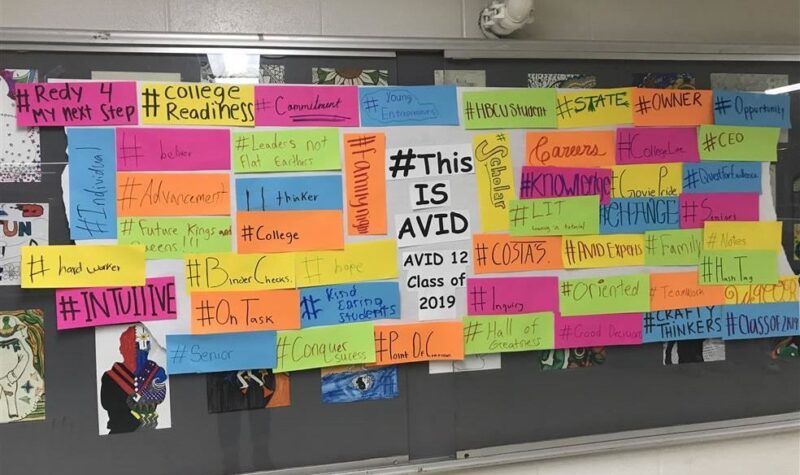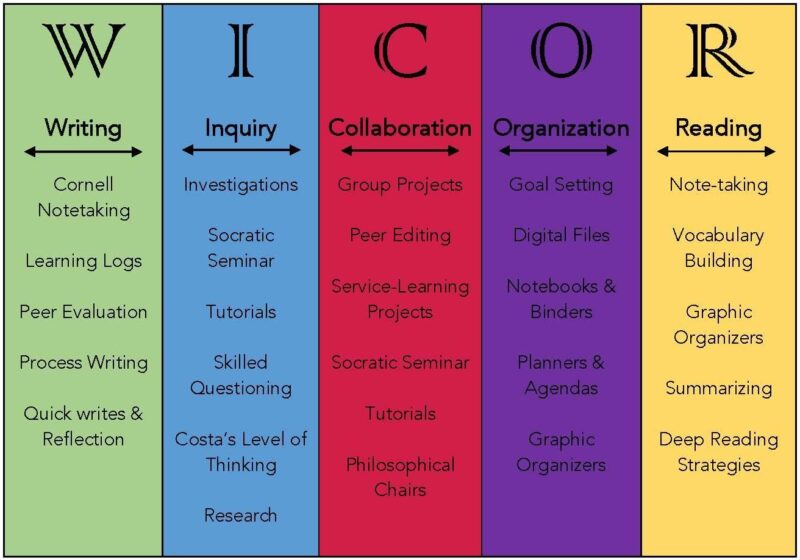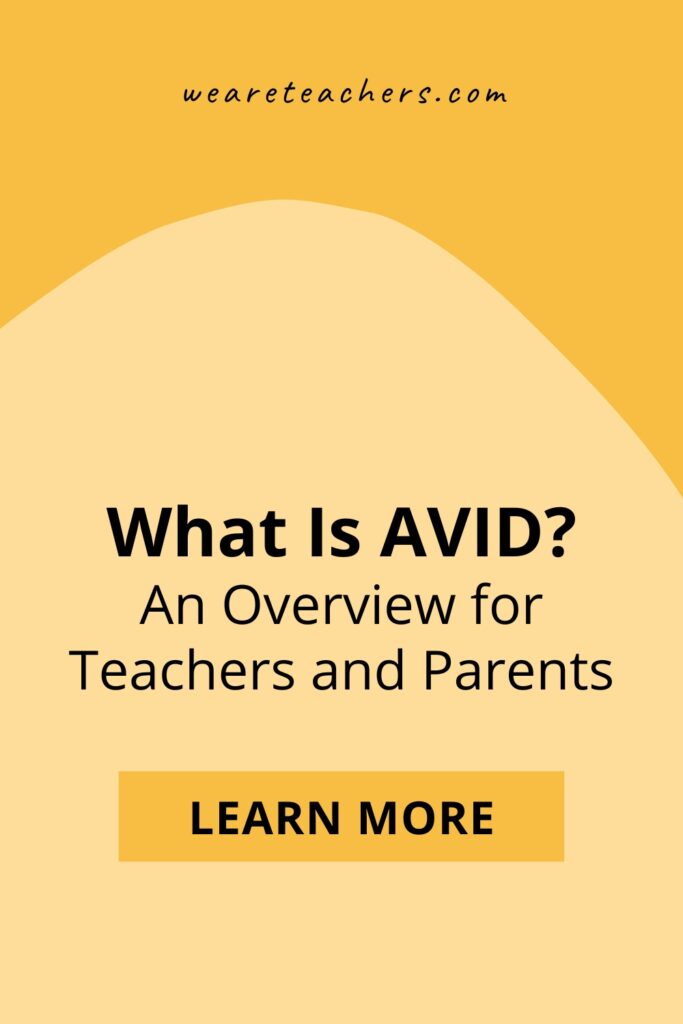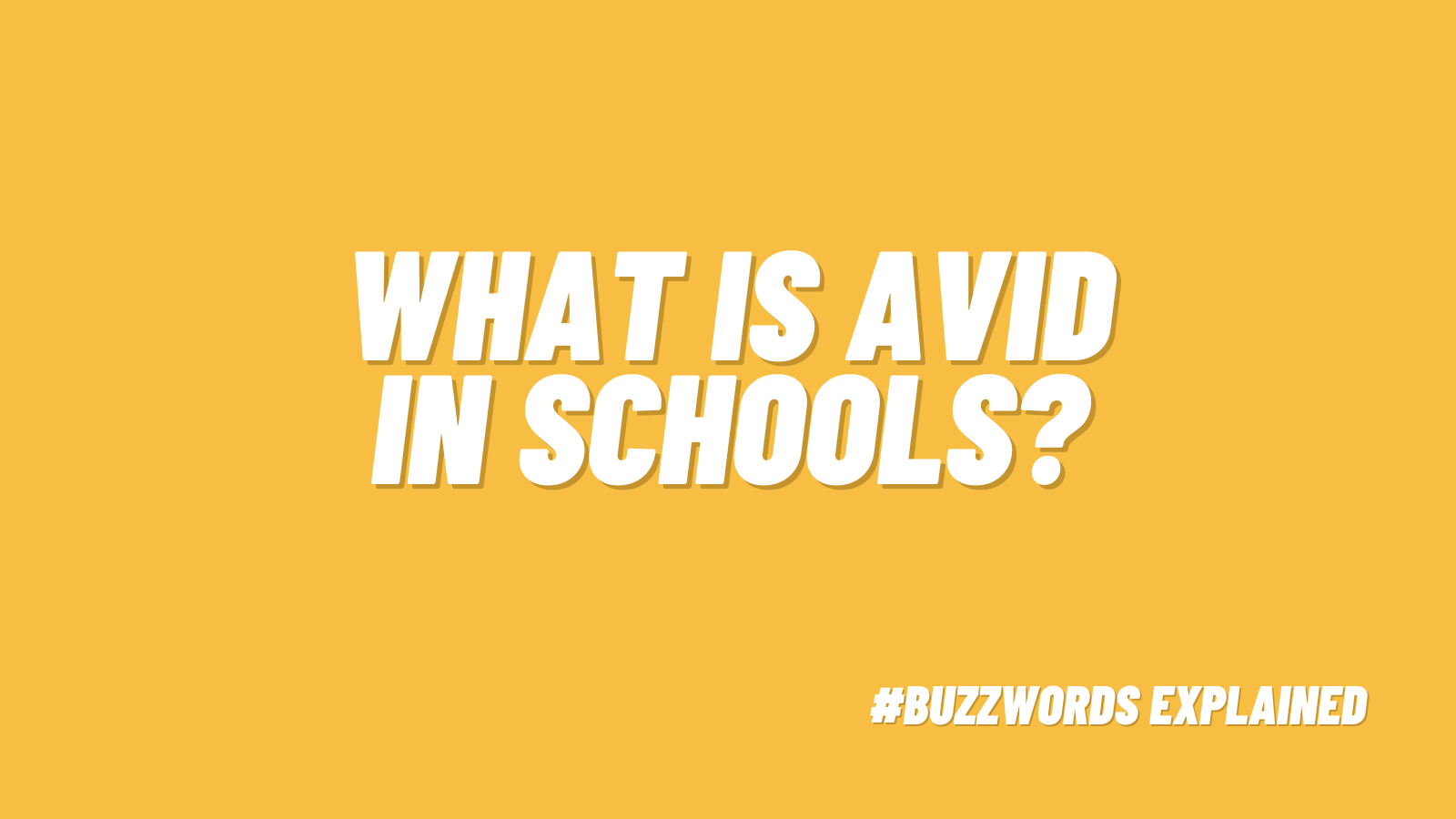College education can be a contentious subject in this country. It’s certainly not the only valid path for high school graduates, and it’s important that we support all career options when we talk to teens about their future. That being said, a college education should be an option for any student who wants to pursue it. That’s where the AVID program comes in. But what exactly is AVID, and how does it help prepare students for their future?
What is AVID?
A lot of kids assume college is off the table. It’s too expensive, and they may not have the grades or smarts to get in anyway. So they give up on the dream, and their schoolwork trails off in response.
AVID (Advancement Via Individual Determination) aims to help more students see college as a realistic goal. This nonprofit organization helps schools build a culture where college is possible for anyone who is willing to put in the work. Participating schools learn how to support students through the college-prep courses they need, while teaching them important skills like problem-solving and critical thinking.
Learn how AVID got its start here.
AVID Target Students
In many ways, AVID is about equity. The program seeks to identify students with college potential who need some extra support along their journey. These are often students from underrepresented groups who are the first in their family to attend college. They may be long-term English-language learners or face societal and socioeconomic challenges.
The AVID program especially benefits kids with more-or-less average grades who might not be working up to their potential because they lack the support system they need. But kids have to be willing to commit and put in the work. This isn’t a handout or a remedial class. It’s a way to close the opportunity gap between kids who have a relatively easy path toward college readiness and those who need extra support to get where they want to go.
Is AVID free?
AVID is free for students who participate. However, schools must pay for teacher training and other program resources. There are many funding options available, including grants, federal or state funds, Title funds, and more. Learn more about AVID funding options for schools here.
What does AVID in schools look like?

When a school or district decides to participate in AVID, it becomes a broad endeavor across many grade levels. Though the major focus takes place in middle and high school, elementary schools start building the excitement.
While the program targets specific students for extra attention, AVID’s effects are felt across the entire student population. All students participate in college- and career-readiness activities, with an emphasis on the executive functioning and life skills students need as adults. The whole school or district places an emphasis on high expectations for its students, encouraging them to set and achieve high standards.
AVID in Elementary School
In the elementary school years, teachers create an environment that supports the idea that anyone can be college-bound. They encourage students to dream big and help them start developing important study and organizational skills. Schools invite students to begin thinking about their future college and career path in an age-appropriate way. The goal is to create a ripple effect that takes students into their secondary years with an open, ambitious mindset.
AVID in Middle and High School
The program kicks into high gear in the secondary school years. Starting in sixth grade, schools actively identify students with the potential to benefit from the program and enroll them in the once-a-day AVID elective class (see more below). They may also use the AVID Excel program with students who need English-language support.
Whether they’re enrolled in AVID class or not, all students in these schools get a higher level of college- and career-readiness preparation. Teachers emphasize higher-order thinking, challenging all of their students to expand their expectations. They expect high achievement from all students, not just a select few.
What is an AVID class?
For one class period each day, students who take this elective spend time focused on the specific skills they need to become college-ready. They learn study skills, note-taking strategies, critical thinking, and organizational skills. These skills are the ones they’ll need to succeed in college and their future careers.
Students also receive academic support in subjects they find especially challenging. This could be teacher or peer tutoring, enrichment materials, or just more time to get schoolwork done in an environment that encourages quiet and learning. Many AVID students don’t have ideal study conditions at home, so this class provides a dedicated learning space.
This is also a time for teachers to provide emotional and personal support. Students in this program work extremely hard and need extra encouragement. They also need to be held accountable and know where to find help when they need it. AVID classes can meet all these needs.
What skills does AVID teach?

In addition to supporting students through their rigorous college-prep courses, AVID uses a methodology known as WICOR:
- Writing: Students learn effective strategies that support strong written communication skills.
- Inquiry: A focus on higher-order thinking creates a scholarly mindset that encourages problem-solving and critical-thinking skills.
- Collaboration: When students learn to work together productively and positively, they prepare for success in real-world situations.
- Organization: By learning organizational skills like time management, planning, goal-setting, note-taking, and study habits, students build a foundation for academic success and beyond.
- Reading: Active reading is a key academic skill, one that can serve a student well throughout their entire life.
In AVID classes, students participate in a variety of lessons and learning activities that teach and reinforce these valuable skills. They may also receive training in areas like computer science, digital citizenship, SEL, STEM, and more. Explore AVID’s learning initiatives here.
Does AVID work?
Like any program, schools see varying levels of success with AVID. When it’s applied and supported in the way the founders intended, it can make a real difference in students’ lives. One study found that 42% of first-generation, low-income AVID college students graduate with a four-year degree within six years. Over the same time period, only 11% of their peers gained a four-year degree.
Some studies indicate that the longer students participate in the program, the more effective it is. Students had higher GPAs, completed more AP courses, and showed higher levels of executive-functioning skills. Explore more research on AVID here.
Other studies find mixed results for the program, noting that it may not be any more effective than remedial academic programs in terms of student grades and graduation rates. Overall, there hasn’t been a great deal of independent research done on the topic, though.
The founders of the program point out that AVID works best when schools make a true commitment, giving teachers the professional development and support they need to put principles into action. Just as with PBIS or restorative justice, AVID requires solid buy-in and continued support from administration, staff, and students.
How are teachers involved in AVID?
Teachers interested in becoming AVID instructors attend a three-day professional development session (virtual) to get started. Those teachers become the backbone of the program, teaching AVID elective classes and supporting the overall program throughout the school or district. Additional courses, sessions, and materials continue to grow the program over time.
Schools assemble a Site Team, composed of teachers, administrators, counselors, and others. As a part of this team, teachers may help to create goals, collect data, obtain funding, and build an AVID Site Plan. They may also attend a Summer Institute Program each year.
Teachers can be indirectly involved by tutoring students in the program in academic subjects, without teaching the elective AVID classes themselves. They can support the program by encouraging higher-order thinking and executive-functioning skills throughout their curriculum.
Discover more about AVID teacher training here.
How To Learn More
Schools interested in learning more about the program should explore AVID’s website, which offers lots of detailed information.
Administrators may also find it helpful to speak with schools that have already implemented the program. Check out the free AVID showcase program to find schools willing to share more about their experiences.
Does your school use AVID? Come share your experiences in the We Are Teachers HELPLINE group on Facebook.
Plus, the Ultimate Guide to College Scholarships.


